Page 1 of 6
Not everything, but a helluva lot about
Adjustable Truss Rods
© Frank Ford, 2/10/99; Photos by FF
Topics:
Nonadjustable Rods
Compression Rods
Bending Rods
Adjusting Truss Rods
Maintaining Adjustable
Rods
Truss Rod Nuts, Fittings and
Locations
Nonadjustable Neck Reinforcement Rods
Virtually all steel strung fretted instruments have some sort of neck reinforcement
to keep the neck straight under the load of string tension. A hundred years ago,
that usually meant hardwood laminations. Martin guitars had square ebony reinforcement
inlaid under the fingerboard. Gibson used a triangular cross section insert of maple
in the same postion.
When Martin lengthened their necks to 14 frets clear of the body, they started using
a steel reinforcing rod. First a T-section rod, later a square tube help keep the
neck stable under a variety of conditions:
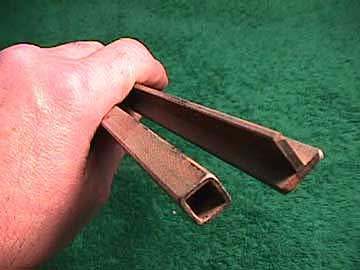
In 1985 Martin started using adjustable truss rods.
Click
here for more information about Martin neck reinforcement.
This is the modern equivalent of the steel reinforcing rod:

It's a graphite fiber epoxy composite, which is unbelievably strong and stiff, and
very light. Some modern makers use this kind of neck reinforcement, which works quite
well, but does not afford adjustment of neck relief.
Nonadjustable neck reinforcement is really quite simple. It simply makes the neck
stiff so that it doesn't change with age or under the load of the string tension.
Adjustable truss rods are much more complex in their action, but they allow a range
of control over neck relief, and make it possible to make thin necks very stable
and strong.
Compression Rods
The adjustable truss rod was patented by a Gibson employee, and was a standard feature
on Gibson instruments starting in 1922. Adjustable rods of this same design are still
in use today because they are very effective, light and simple.
Let's take a look at the "standard" adjustable truss rod, as used in Taylor
guitars:
Here's a longitudinal section of a Taylor guitar neck, showing the truss rod, installed
in a groove under the fingerboard:
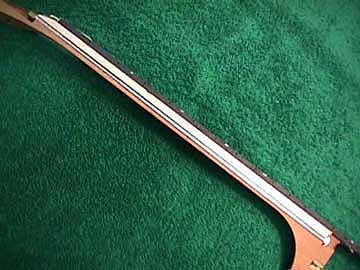
That white stuff over the rod is a maple "filler strip" that lays in the
groove on top of the rod to fill the cavity.
This is the adjusting nut at the peghead end:
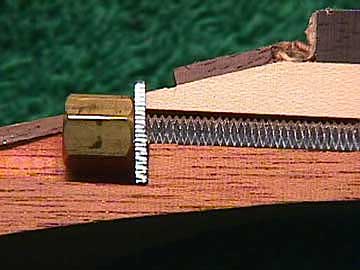
At the other end, the rod is anchored solidly in the neck heel:
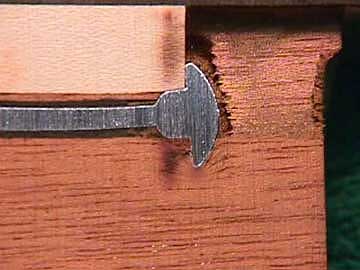
In order to describe the action of the rod, I'll use a cross sectional view of the
same system:
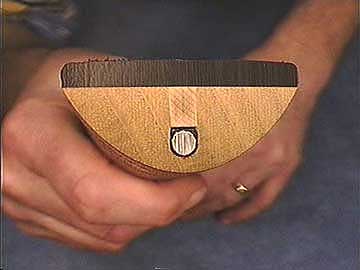
Notice how deeply the rod is buried in the neck.
The basic action of the standard adjustable truss rod is by compression of the back
of the neck. When the nut is tightened, the back of the neck is compressed and causes
the neck to bend backward. It is really quite predictable because the back of the
neck has a much smaller cross-sectional area, so it compresses much more easily than
the front. If the truss rod were mounted closer to the fingerboard it would have
to pull harder to compress the back of the neck, but it could still do the job, because
the fingerboard is very dense material and really resists compression.
I hope that makes sense. All adjustable rods work on the same principle. Compress
one side, and something is bound to bend.
More
1
2
3
4
5
6
Back to Index Page





